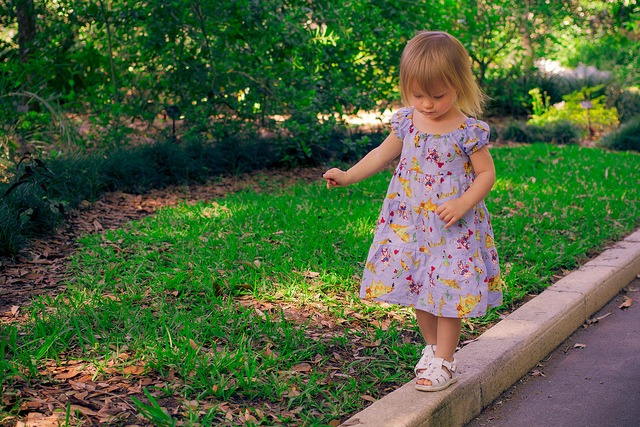
Toddler movement and coordination: What every parent needs to know.
It might be something adults take for granted since they have it mastered and more than likely don’t remember what it was like to be without it , but gaining balance and coordination is one of the most exciting parts of a young toddler’s life. In fact, they’ll more than likely become so enamored with putting together this new skill set between the ages of two and three, Mom and Dad might think the constant whirlwind of toddler activity that’s become your youngster means they’ve lost the ability to concentrate on any one thing.
Fortunately, that’s not the case. Children are constantly on the go during this time and all that running, jumping, kicking and climbing will make him stronger and more coordinated. The months ahead are going to be transformational for you both—as she learns more about how her legs, arms and balance works her movements will become smoother and more coordinated. These are the times when your child will learn to direct their kicks so a ball goes where they want it to, seat themselves in a children’s chair and even make it up and down the stairs on their own.
Natural Progression
Much of the work at this stage is a natural progression and parents should be watching when toddlers climb stairs and walk on unfamiliar  surfaces for the first time with a steady hand that’s always ready to lend support. However, Mom and Dad don’t need to be the soul source of new toddler activities at this point in his development since he’ll find plenty to explore on his own. Don’t relegate yourself to a backup position completely though; there are still lots of different ways parents can foster this period of their daughter’s development.
surfaces for the first time with a steady hand that’s always ready to lend support. However, Mom and Dad don’t need to be the soul source of new toddler activities at this point in his development since he’ll find plenty to explore on his own. Don’t relegate yourself to a backup position completely though; there are still lots of different ways parents can foster this period of their daughter’s development.
One of the big ideas behind balance and coordination at this age is getting the torso to take on a big part of the responsibility for keeping your toddler upright. The trunk, as this central part of the body is sometimes called, gets better at balance when the surfaces it encounters vary. In other words, helping your child walk over uneven surfaces in the home like blankets and pillows on the floor make the trunk work to maintain an upright position. Likewise, being close by when you take her to the jungle gym at the local park does wonders for her hand-eye coordination.
Wheelbarrow walk
Holding his legs up in the air while he wheelbarrow walks is another great exercise to build both confidence and stability and even the old standbys like hopscotch will force him to test his newly acquired balancing skills.
While letting them explore the outdoors in the guise of your backyard and the local park is great at this time in their development, keep in mind their judgment and self-control are still lagging behind the adrenaline rush of their developing motor skills. In other words, even though your toddler is taking another great step on the road to growing up and independence, they still need the watchful eyes of their parents to guide them on their way.
Read more info like this at All My Children.
Author: Rob Starr